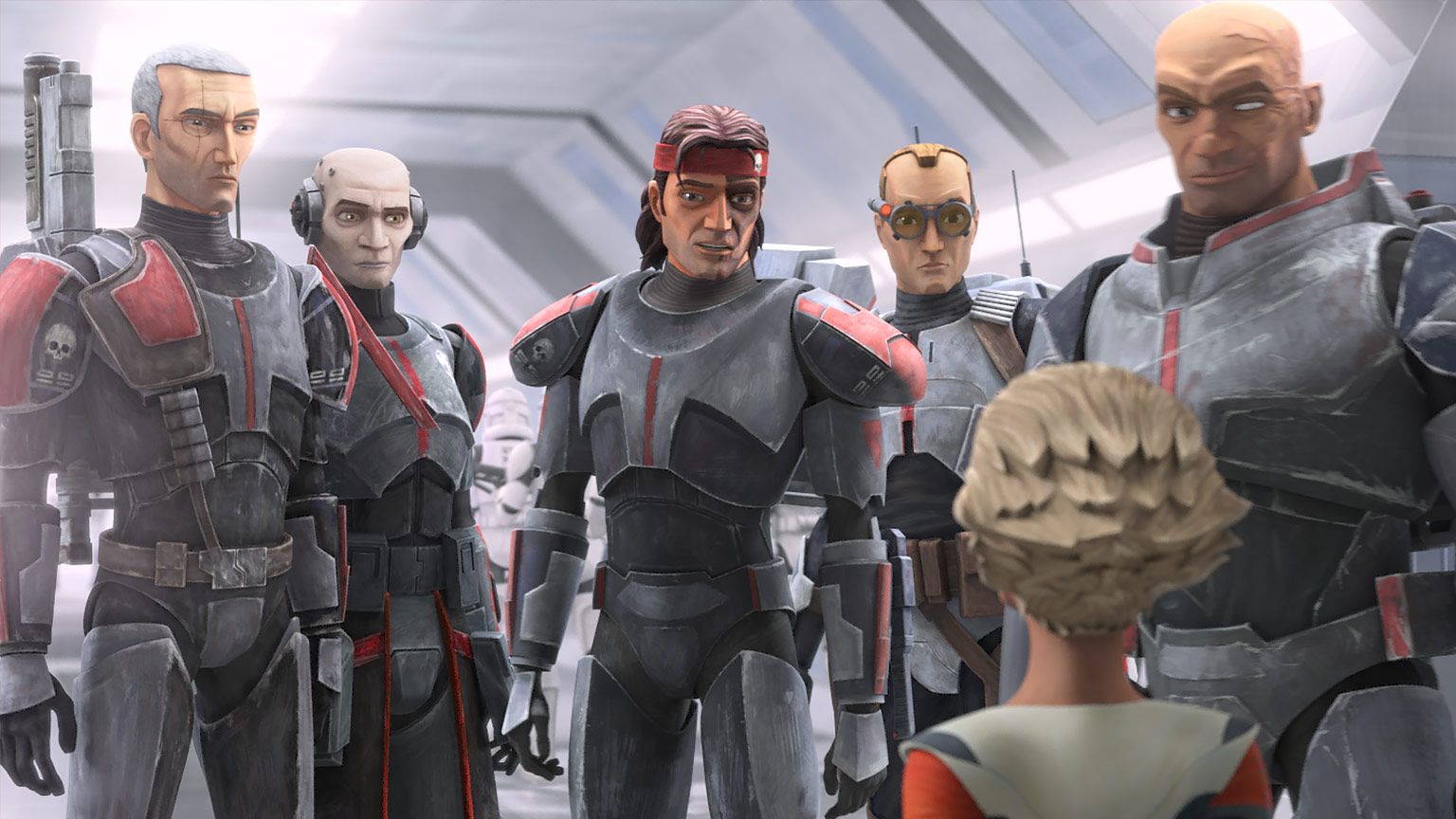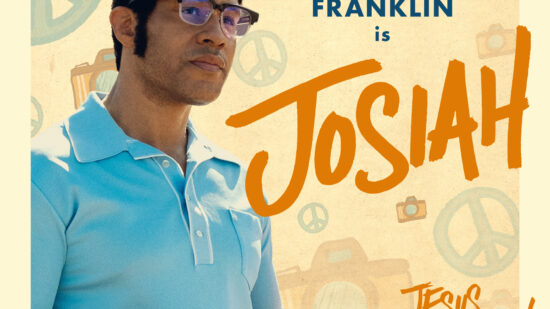 By Jacob Sahms
By Jacob Sahms
Fans of The Clone Wars, Rebels, and The Mandalorian, rejoice! Dave Filoni returns to the screen with Disney+’s The Bad Batch, following the Clone Force 99, a genetically divergent group of clones introduced in The Clone Wars. These clones did not follow through with the Order 66, Palpatine’s order to kill all the Jedi, and begin to realize that the new Empire is actually an evil enterprise. By the end of the first longer pilot episode and the second episode, audiences recognize that these clones have distinct personalities – and that their team is their family.
 George Lucas worked hard to keep the animated world of Star Wars in line with the real-life action world of Star Wars, and the result here is a television series that fans old and new can appreciate. The animation is specifically stylized to that of these stories like the ones before it, but the humanity of the clones (how ironic) plays out with feeling, thanks to voice acting of Dee Bradley Baker (who voices all of the clones) and the animation that gives the audience visuals like hair blowing in the wind, facial expressions, and dust flying. This might look simple, but there is plenty going on here in action gun battles and building melodrama.
George Lucas worked hard to keep the animated world of Star Wars in line with the real-life action world of Star Wars, and the result here is a television series that fans old and new can appreciate. The animation is specifically stylized to that of these stories like the ones before it, but the humanity of the clones (how ironic) plays out with feeling, thanks to voice acting of Dee Bradley Baker (who voices all of the clones) and the animation that gives the audience visuals like hair blowing in the wind, facial expressions, and dust flying. This might look simple, but there is plenty going on here in action gun battles and building melodrama.
 Much of the melodrama comes the experience of the Bad Batch (Hunter, Wrecker, Tech, and Echo) with Omega (Michelle Ang), a young female clone working in the medic department on Kamino. Together, they initially avoid Palpatine’s (the legendary Ian McDiarmid) and Admiral Tarkin (Stephen Staunton), and begin to piece together what the Empire is doing. While Hunter has no real background for protecting or encouraging someone younger, he slides into the de facto role of father to Omega, and she begins to help him grasp feelings that had long been ignored. It’s clever really, without distracting from the action of the episodes, how Filoni and partner Jennifer Corbett have woven the emotional growth of the characters into these first few episodes.
Much of the melodrama comes the experience of the Bad Batch (Hunter, Wrecker, Tech, and Echo) with Omega (Michelle Ang), a young female clone working in the medic department on Kamino. Together, they initially avoid Palpatine’s (the legendary Ian McDiarmid) and Admiral Tarkin (Stephen Staunton), and begin to piece together what the Empire is doing. While Hunter has no real background for protecting or encouraging someone younger, he slides into the de facto role of father to Omega, and she begins to help him grasp feelings that had long been ignored. It’s clever really, without distracting from the action of the episodes, how Filoni and partner Jennifer Corbett have woven the emotional growth of the characters into these first few episodes.
But this is Star Wars, so there are big picture ideas flowing through like the Force. Not all of the clones receive Order 66, but some are more willing to follow the order once they hear about it than our four members of the Bad Batch. This is true in the real world, too: we have to make choices all of the time about going along with the flow, ignoring what our “gut” is telling us, and running through stop signs that the Holy Spirit throws up for us to heed. For Hunter, his ideals have outgrown the mind he was just supposed to be stuck with; he’s the leader of the group and the moral conscience, and he recognizes it doesn’t make any sense to kill Jedis because he’s known Jedis, and they are good. While I doubt my sons jumped to this, I found myself thinking about the twisting of the Nazis party into the Holocaust, or the way racism has run through the United States. Good people know these things are wrong, but too often, they’re swept up in the flood of “orders” or group think.
 The theme continues with the “registration” of people and the issuing of numbers as the Empire tries to sort, locate, and eliminate various threats. All of this is explained in the way of progress and “order,” but it’s in fact nefarious and separates people into us versus them. The Bad Batch can see the development, but the average civilian goes along with what the Empire tells them. You can hear the Emperor cackling in the distance; we know how the major movies develop, and Filoni is showing us how they got there. Evil wins when good doesn’t use it’s common sense, when good doesn’t stand up, when good people say things like, “it’s not my problem” or “it doesn’t matter to me.”
The theme continues with the “registration” of people and the issuing of numbers as the Empire tries to sort, locate, and eliminate various threats. All of this is explained in the way of progress and “order,” but it’s in fact nefarious and separates people into us versus them. The Bad Batch can see the development, but the average civilian goes along with what the Empire tells them. You can hear the Emperor cackling in the distance; we know how the major movies develop, and Filoni is showing us how they got there. Evil wins when good doesn’t use it’s common sense, when good doesn’t stand up, when good people say things like, “it’s not my problem” or “it doesn’t matter to me.”
The Bad Batch is soaring, two episodes in, and one can only hope that the exciting, funny, eye-popping adventures will continue as the group figures out how to be family, and determines what they’re willing to sacrifice so that good will win.




